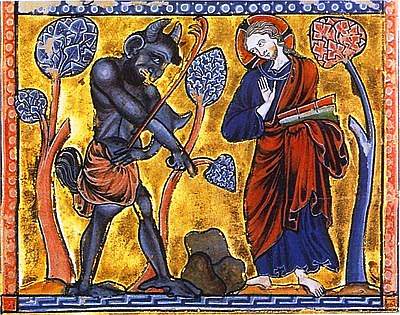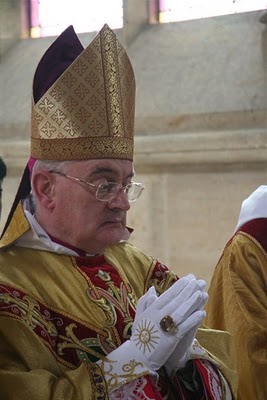Liturgikonferansen i Fontgombault i 2001
«Kristus, ikke menigheten, er liturgiens subjekt«, var temaet for en viktig liturgikonferanse i Benediktinerklosteret Notre Dame, i Fontgombault i Frankrike. Det har vært arrangert flere liturgikonferanser der, men konferansen fra 2001 er spesielt kjent, fordi daværende kardinal Ratzinger deltok, og holdt et viktig foredrag om «Liturgiens teologi». (Jeg hadde nok så vidt hørt om denne konferansen før, men må nok jobbe syetmatisk i nokså lang tid framover for å få en noenlunde solid oversikt over hva som har skjedd luturgisk de siste 50 til 150 år.) På denne siden kan bl.a. lese følgende om konferansen (som jeg snart kommer tilbake til):
The congress proved important for the way in which the chief guest speaker, Cardinal Ratzinger, Prefect of the Congregation for the Doctrine of the Faith, dealt in passing with the question of the so-called «reform of the reform». …
Oddly, neither the International Federation of Una Voce not the German organization Pro Missa Tridentina were invited to send a delegate. However, one of the guest speakers, was Professor Robert Spaemann, a former President of Pro Missa Tridentina and another, was Professor Roberto de Mattei from Italy, a member of Una Voce.
The purpose of the conference was to promote, in the words of one participant, «a sort of ecumenism within the Church»: to bring together Catholics from different liturgical orientations to discuss basic questions about the liturgy.
Despite much off-stage, and extravagant, controversy among people who were not represented at the congress about its purpose, the conference was never intended to be an exclusively ‘traditionalist’ affair. Nor was the meeting about how to effect a so-called «Reform of the Reform» or about how to manoeuvre communities which use the classical liturgy into changes to the traditional books and the manner of using them. Rather, the conference was about the liturgy in general and the problems confronting it today: «an attempt», as our observer put it, «to return to the good beginnings of the [pre-conciliar] liturgical movement».
Jeg legger merke til at man ønsker å gripe tilbake til det positive i den litugiske bevegelsen fra første halvdel av 1900-tallet, at man ikke har hatt som prioritett å løfte fram den tradisjonelle latinske messen, men heller (ser det ut til) ønsker å arbeide for en reform av liturgureformen.


 Biskop Elliott i Melbourne, Australia, som jeg skrev om i går (se her), hadde da visse innvendinger mot den tradisjonelle latinske messen, men har nå begynt å feire den selv. En av grunnene til hans forandring er at artikkelen jeg da siterte, var skrevet for 6-8 år siden, og nå etter pave Benedikts Summorum Pontificum er situasjonen blitt ganske ny. Dessuten var Elliot i mot en viss type TLM, der presten og ministrantene holdt på med noe for selv oppe ved alteret, mens folket gjorde andre ting – sang salmer vanligvis. Messen han her feiret (
Biskop Elliott i Melbourne, Australia, som jeg skrev om i går (se her), hadde da visse innvendinger mot den tradisjonelle latinske messen, men har nå begynt å feire den selv. En av grunnene til hans forandring er at artikkelen jeg da siterte, var skrevet for 6-8 år siden, og nå etter pave Benedikts Summorum Pontificum er situasjonen blitt ganske ny. Dessuten var Elliot i mot en viss type TLM, der presten og ministrantene holdt på med noe for selv oppe ved alteret, mens folket gjorde andre ting – sang salmer vanligvis. Messen han her feiret (